Compliance

From 2018 to 2013, under contract with the Bureau of Indian Affairs and Bureau of Indian Education, Sundance performed third-party audit services in Indian country, including requirements in the US Environmental Protection Act (EPA) Consent Agreement and Final Order. The Environmental Management, Assessment and Performance (EMAP) Program scope extends to a broad multi-media regulatory environment comprising all federal environmental statutes and their implementing regulations referenced in Title 40, Code of Federal Regulations (CFR), and under the authority of the EPA and RCRA Comprehensive Plan, Waste Inventory and Hazardous Waste, Determinations Waste Transport and Manifests, Hazardous Waste Closure RCRA Storage, Clean Water Act 301 (NPDES) and 311 (Oil and Hazardous Substance) Oil Pollution Prevention, 40 CFR Parts 112 Stormwater Pollution Control and Countermeasure Plan and Tracking System, Integrity Inspection, and Hazardous Waste Management under 40 CFR Parts 112 and 260-279.
Sundance managed more than $5M in environmental and safety compliance services across 270 Indian Affairs facilities nationwide and supported more than 120 Tribes. Work included activities for achieving and maintaining compliance with environmental and safety requirements. EPA-approved EMAP Program auditors conducted multi-media environmental compliance audits and provided technical assistance for integrating information into the Indian Affairs compliance Environmental Management System. Program tasks also included reviewing all Indian Affairs program operations to determine if audited facilities comply with environmental requirements and standards (e.g., statutes, regulations, and executive orders), identifying root causes of deviations from requirements, and recommending corrective and preventive action with follow-up at selected locations.
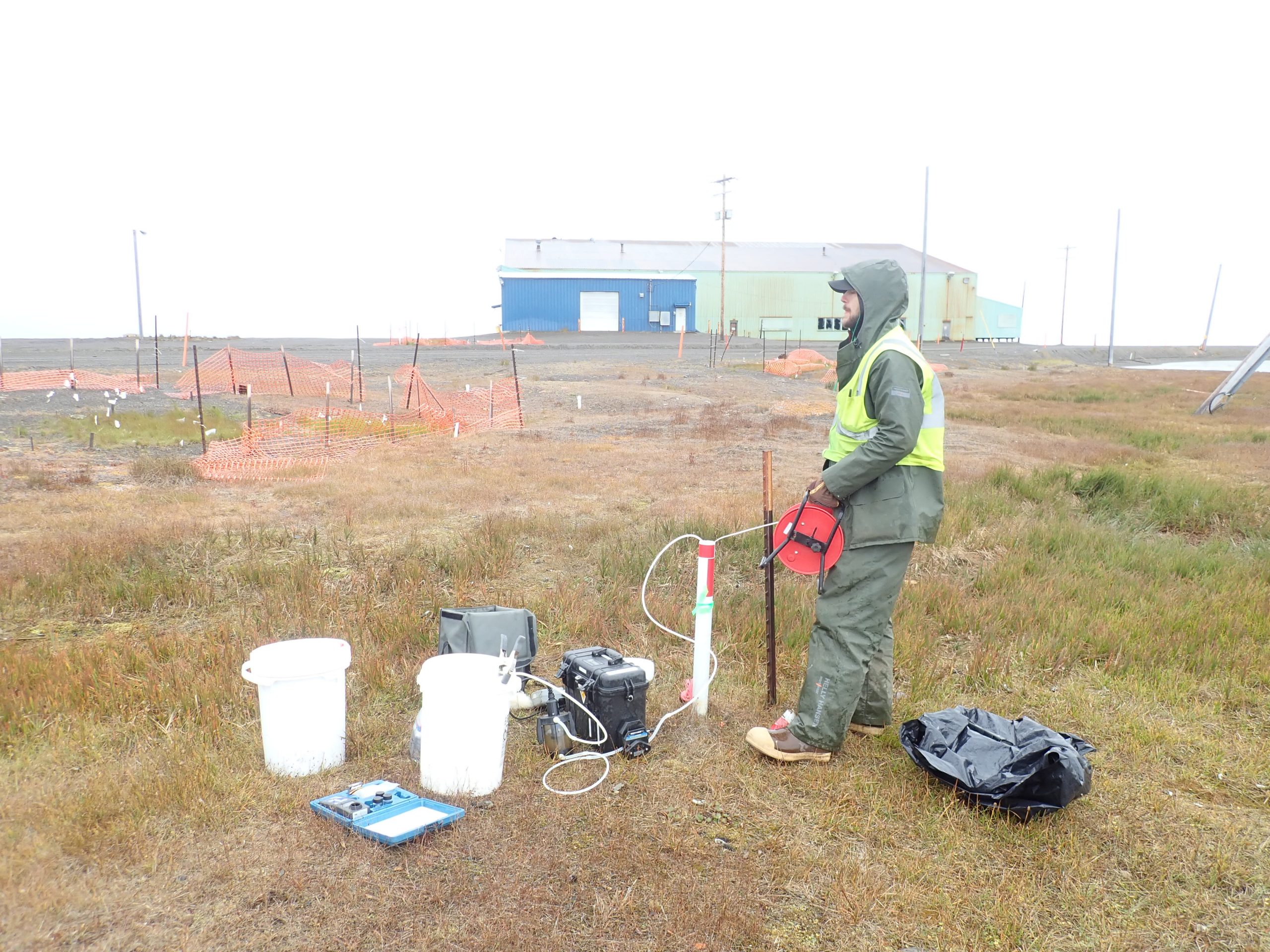
Since 2015, Sundance has performed a full range of environmental support activities for Naval installation environmental compliance programs on Andersen Air Force Base and Naval Base Guam to ensure that the supported components, tenant commands and facilities, and contractor operations demonstrate and maintain compliance with all applicable federal, US territory, and local statutes, as well as with DoD and Navy policies, permits, instructions, and guidance. Work includes, but is not limited to, inspecting, auditing, sampling, tracking, planning, and developing and updating permits for environmental compliance activities.
Sundance has performed environmental compliance oversight for more than 194 permits to date. Environmental compliance programs include Emergency Planning and Community Right-to-Know Act, Clean Air Act, Clean Water Act (CWA), Safe Drinking Water Act (SDWA), Solid Waste Disposal Act, underground and aboveground storage tank compliance management, ozone-depleting substances management, hazardous and solid waste management, oil management, pesticides, National Environmental Policy Act, pollution prevention, environmental quality assessment, and environmental sampling and analysis. Project tasks have included:
- CWA compliance (including municipal separate storm sewer system [MS4]), involving Stormwater Pollution Plan Preparation, updating and monitoring, training, sample collection, National Pollutant Discharge Elimination System compliance monitoring and sampling analysis, and sanitary sewer overflow.
- SDWA compliance, including drinking water wells reporting, bacteriological monitoring, distribution system chlorine residual and nitrate testing, underground injection control, and lead in priority areas.
- Class I and II ozone-depleting substances and hydrofluorocarbon equipment inventory, management plans and database management, and certification.
- RCRA permit renewals, hazardous waste management compliance, 90-day storage, and solid waste management plans.
Sundance supported the Air Force Civil Engineer Center’s Environmental Program by conducting a CERCLA Five Year Review for the Titan Missile Site (MS12) and a combined RCRA Periodic Review for 21 sites at McConnell Air Force Base, an active military installation located near Wichita. Five-Year Reviews must adhere to the US EPA's Comprehensive Five-Year Review Guidance, OSWER Directive 9355.7-03B-P. CERCLA and RCRA reviews include review of historic and background documents for the sites (including Records of Decision and appropriate Decision Documents), site inspections to confirm current conditions and status of remedies, and interviews with on-site stakeholders. Sundance assisted the US Army Corps of Engineers and US Air Force in responding to various inquiries (congressional, media, and other federal government). Tasks also included document reviews, interviews, general site inspections, site inspection documentation, and reporting.
Sundance is performing environmental compliance monitoring for a confidential commercial client to meet permit requirements. Compliance activities include:
- Equalization basins management compliance monitoring and testing;
- Monthly visual inspection of an impoundment pond, including linear inspection and flowmeter calibration;
- Quarterly groundwater quality sampling and gauging of groundwater monitoring wells;
- Quarterly wastewater and surface water sampling;
- Periodic reporting of monitoring results;
- Bi-weekly impoundment biological monitoring and testing;
- Semi-annual pond effluent monitoring;
- Standard operating procedure development;
- On-call operations and maintenance activities; and
- Management and disposal of investigation-derived waste.
Sundance performed recurring environmental services for waste generated at Aberdeen Proving Ground in compliance with all applicable federal and local statutes and regulations, Executive Orders, DoD, and component-specific permits, policies, instructions, and guidance. The program involved auditing and inspections waste sampling, and analysis, waste characterization, waste collection, and transportation and disposal at recurring waste accumulation areas. Sundance performed all waste area inspections for waste sampling, including chain of custody, DoD Environmental Laboratory Accreditation Program lab verification, analytical quality control, waste profiling, manifesting and disposal coordination, data quality, analytical results reports, and database entering and management.
Audits and inspections were performed for ongoing waste accumulation for waste material containing a mix of petroleum, oil, and lubricants, and other RCRA/CERCLA contaminants. Inspections were conducted bi-weekly generating hazardous waste inspection reports to an established schedule and noting status, conditions, and findings. These inspection reports triggered the periodic sampling of accumulated waste material; the removal and transportation and disposal of wastes, including proper disposal profiling, shipping containers, labels, and markings; development of waste identification sheets to support waste profiles, manifests, and Land Disposal Restriction form with supporting analytical results in accordance with 40 Code of Federal Regulations (CFR) and 49 CFR; and package, label, weigh material, and reconcile waste turn-in documentation to reflect actual material received.
Since 2019, Sundance personnel have supported the Fort Carson Air Quality Program. Services to date have included:
- Title V Operating Permit Support (compliance demonstration and permit application development)
- Construction Permit Support (permit application development and regulatory evaluation)
- Emission Inventory (calculating monthly emissions and annual emissions, developing the annual emissions inventory, and inputting data into their air emissions software)
- Method 9 Observations (maintain certification and provide Method 9 opacity readings as requested)
- Technical support (reviewing new regulations, evaluating impact to base, providing input to regulators)
- Audit/inspection assistance (prepare the Program for EPAAS (Army 3rd party Audits) and state audits
- Other Air Program support necessary for the installation to remain in compliance
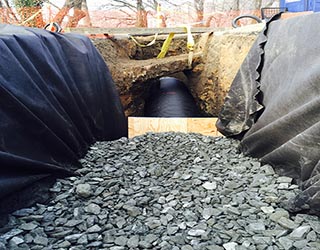
To ensure compliance with community water systems standards for lead user service lines under the California State Water Resources Control Board Division of Drinking Water, Sundance surveyed drinking water service lines within Beale and Travis Air Force Base's distribution systems. Using non-intrusive and active or intrusive lead pipe investigation technologies, Sundance identified and analyzed the service lines to determine the material of construction and lead components. Replacement concept designs, engineering estimates, and bid packages were developed for those lines identified for replacement.
Under an Army Environmental Compliance and Conservation Services contract for the US Army Environmental Command, Sundance is providing federal compliance actions to meet the boiler Maximum Achievable Control Technology (MACT) standards under the Texas Commission of Environmental Quality regulations. Sundance's compliance actions to meet MACT standards include:
- Stack testing under National Emission Standards for Hazardous Air Pollutants
- Method 9 air compliance opacity readings
- Site-specific monitoring plan development and predictive modeling
- Boiler and process heater system energy assessments, inventory of major energy use systems consuming energy from affected boilers and process heaters, energy management program review and listing, and recommendations for energy savings potential to improve efficiency, the cost of specific improvements, benefits, and the timeframe for recouping those investments
- Boiler tune-ups on seven natural gas and one wet biomass boiler for steam generators and water boilers, including inspection, cleaning and replacing components, flame-pattern optimization, calibration of air to fuel ratios, carbon monoxide emissions optimization and nitrous oxide requirements, and record maintenance
Sundance conducted stormwater survey, inspection, and monitoring of run-on/run-off engineering controls and stormwater best management practices during construction activities. Sundance surveyed and assessed existing low-impact development stormwater structures downgradient of the project site. Sundance inspected Spill Prevention, Control, and Countermeasures to preserve the function of existing low-impact development structures. Assessment and condition evaluation of stormwater system and components were performed over the duration of the project at multiple stormwater drainages and collection points existed downgradient of the project site.
Sundance initiated a multi-year F-35A Beddown Program PFAS Soil Stockpile Inspection Program, which included inspecting the soil stockpiles and PFAS landfill weekly; maintaining site access and egress, stockpile access, and signage; repairing PFAS and PFAS-Petroleum, Oil, And Lubricants mix stockpiles; producing an Accident Prevention Plan, Stormwater Pollution Prevention Plan, and Sampling and Analysis Plan for leachate collection sampling; and preparing an annual report. Sundance created a digitized stockpile inspection system to optimize time in the field, as well as track stockpile condition.
Characterization & Remediation
Sundance is performing environmental remediation services to evaluate alternatives for providing clean drinking water to wells impacted by PFAS-contaminated drinking water, to sample private wells, and to provide bottled water service to impacted residences in the vicinity of Yakima Training Center. Tasks include private residence well monitoring for up to 350 residential wells, inventory of all private drinking water wells and systems within a 2-mile radius of the installation, and analysis of alternate drinking water sources for up to 60 wells with PFAS detections above the lifetime Health Advisory Level, as well as optional analysis of additional drinking water sources, removal action documentation, installation of monitoring wells, and other optional services.
Sundance is managing environmental services at the Atlas Missile Site on the former Walker Air Force Base. Services include reviewing past site characterization reports, planning, field investigation, and reporting services. The team conducted site inspection to determine the presence or absence of contamination due to past Department of Defense (DoD) activities in compliance with CERCLA and DoD, Army, and USACE regulations and guidance. Inspection was performed to: 1) gather sufficient information regarding potential impact to determine if additional investigation or action by the DoD is needed; 2) preliminarily assess the potential risks to human health and the environment; and 3) determine whether hazardous substances are present and have, or are, migrating to the surrounding environment. The ultimate goal of the FUDS Program is to achieve Project Closeout of the Former Walker AFB, Atlas Silo 11.
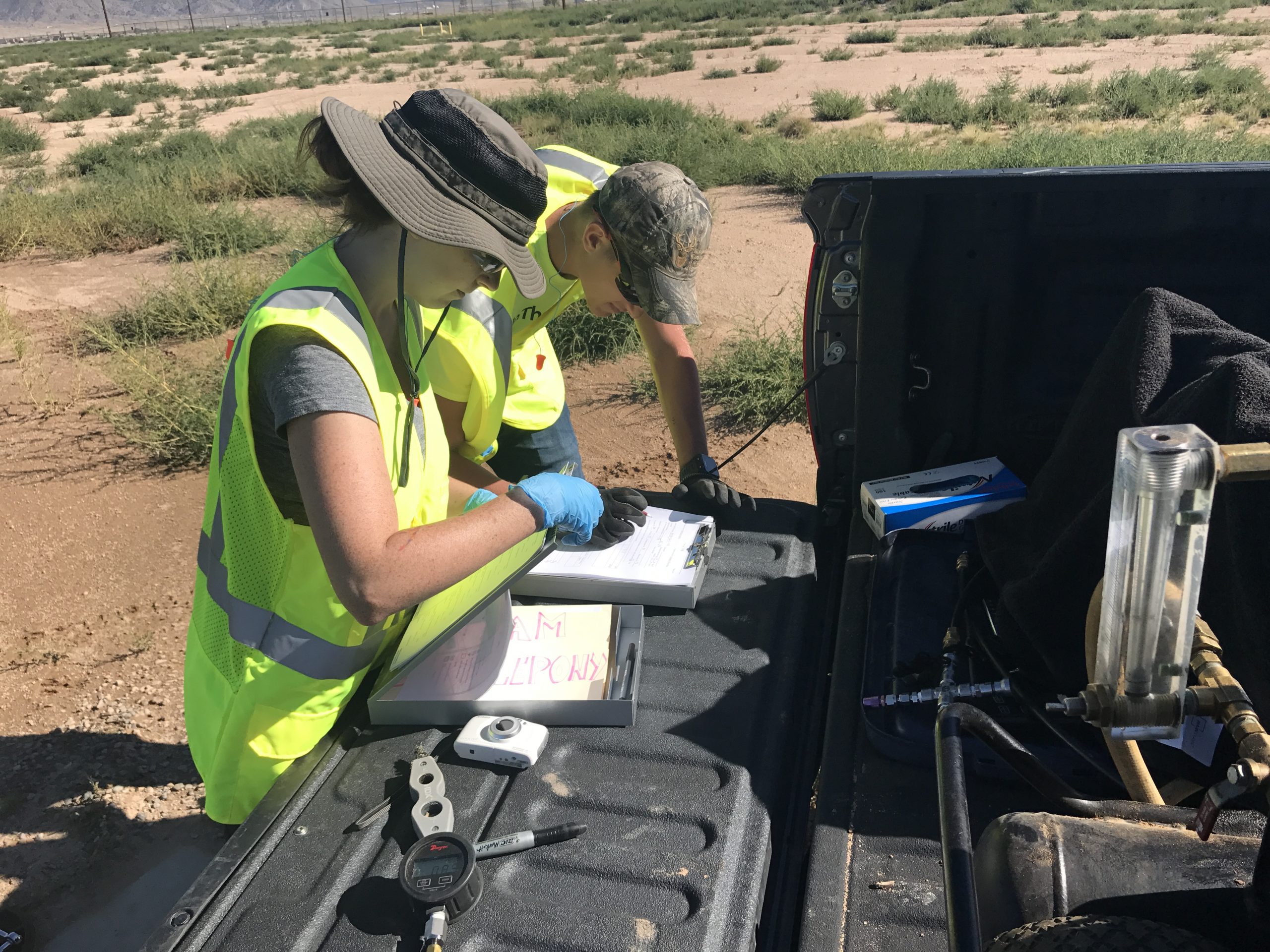
Since 2016, Sundance has supported environmental restoration efforts at the Bulk Fuels Facility site under the requirements of RCRA, as administered by the New Mexico Environment Department. The Bulk Fuels Facility site comprises solid waste management units, a jet fuel leak that has caused soil, soil vapor, and groundwater contamination. Prior to beginning fieldwork, Sundance submitted project planning documents that were approved by the New Mexico Environment Department. Sundance performed quarterly monitoring of 284 monitoring points at 56 locations in 2016, collecting more than 1,200 samples for volatile organic compounds, ethylene dibromide, fixed gasses, and total petroleum hydrocarbons. Sundance successfully coordinated with stakeholders to optimize the soil vapor monitoring program, which resulted in $500,000 in annual savings to the USACE and its Air Force clients. With these cost savings, Sundance performed additional tasks at no additional cost to the government. Sundance completed monthly sampling and reporting for drinking water supply wells owned by the base and Department of Veterans Affairs Medical Center. Sundance's scope included the installation of three groundwater monitoring wells to 500 feet below ground surface to evaluate volatile organic compounds and ethylene dibromide constituents in groundwater. Sundance managed specialty subcontractors for laboratory analysis of soil and groundwater samples and subsurface utility location, marking, and mapping surveys.
Sundance is conducting a CERCLA Response Action at the Red Devil Mine on the Kuskokwim River in remote southwest Alaska. The mine has been inactive since the early 1970s but was once the leading mercury producer (mine and retort) in the state. Large volumes of ore processing tailings remain at the site adjacent to Red Devil Creek and are the primary contaminant source at Red Devil Mine. Since 2021, Sundance has performed baseline monitoring activities, including biannual groundwater and surface water monitoring, and technical and logistical planning in coordination with the BLM and multiple regulatory agencies.
From 2021 to 2022, the team developed a field sampling plan, coordinated the field schedule, and performed field sampling tasks ahead of schedule. Work under the 2023 to 2024 contract includes revising the field sampling plan and health and safety plan and continuing field sampling tasks. Field activities comprise groundwater monitoring at 28 monitoring wells, installing new bladder pumps in several monitoring wells, monitoring well maintenance and bladder pump repair, groundwater and surface water sampling, downloading and analyzing transducer data, calculating discharge rates for streams and seeps, and transporting samples to the laboratory under chain of custody within temperature and hold times for low level metals. Sundance also performed stormwater pollution prevention inspection, site reclamation, and evaluation of stream restoration and slope stabilization activities along Red Devil Creek.
Sundance is performing remedial action support of the Modesto Groundwater Superfund Site, which includes a decades-old chlorinated solvent release from a drycleaner in downtown Modesto. Chlorinated solvents have impacted soil and groundwater and pose a vapor intrusion risk to the commercial buildings along McHenry Avenue where the release originated. Sundance performs operation and maintenance of an existing soil vapor extraction (SVE) system and is working with the project team to optimize SVE operation by performing a geotechnical evaluation of the soil properties at the site. The project includes monthly sampling of the SVE system influent and effluent and quarterly sampling of soil vapor monitoring points, sub slab sampling points in commercial buildings, and indoor air in commercial buildings.
Quarterly groundwater monitoring is conducted on a 53-well groundwater monitoring network that extends from the drycleaner area into residential neighborhoods in all directions from the site. The team is performing significant upgrades to the groundwater sampling network, which was found to be in a deteriorated state when the contract began. Sundance prepares quarterly reports describing monitoring activities and providing groundwater and soil vapor analytical data, potentiometric surface maps, and contaminant plume maps interpreting the current conceptual site model for the project.
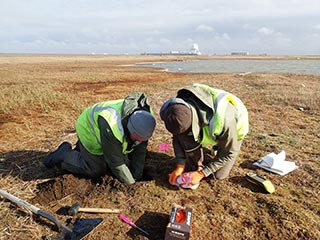
Sundance conducted preliminary assessments and site inspections to evaluate for the presence of PFAS. Tasks included preparing planning documents; advancing soil borings; installing groundwater monitoring wells; groundwater, surface water, soil, and sediment sampling; surveying; investigative derived waste (IDW) handling and disposal; and final reporting. Preliminary assessments were performed for 12 remote radar stations by conducting a literature search to identify potential PFAS contamination from AFFF. Site inspections were completed based on preliminary assessment findings and final reporting is now in process.
Planning documents for each of the sites consist of a detailed project schedule, a Uniform Federal Policy for Quality Assurance Project Plan (UFP-QAPP) Work Plan, and an Accident Prevention Plan and Site Safety and Health Plan. Planning documents were developed in accordance with the Alaska Department of Environmental Conservation’s Site Characterization Work Plan and Reporting Guidance and Field Sampling Guidance, 18 Alaska Administrative Code 75 Oil and Other Hazardous Substances Pollution Control, and the UFP-QAPP Work Plans. Complex logistical considerations have been facilitated to accommodate the remoteness of sites, limited access, and considerations for neighboring native communities. The site inspection tasks include one or more of the following: soil boring and collecting surface and subsurface soil samples; installing, developing, and sampling groundwater monitoring wells; sampling on-site monitoring wells; collecting sediment, surface water, and IDW samples; and managing and disposing of IDW.
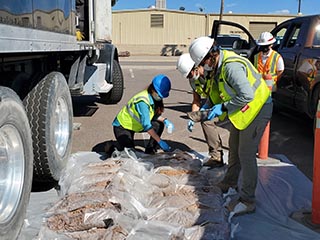
Sundance is conducting a Phase I and Phase II PFAS Remedial Investigation at Luke Air Force Base and the Gila Bend Air Force Auxiliary Field, located approximately 50 miles south of Luke Air Force Base. Services comprise site characterization efforts and development of a conceptual site model. The team is performing delineation of the nature and extent of PFAS contamination resulting from Aqueous Film Forming Foam releases, including the lateral and vertical extent of PFAS in PFAS-impacted media (e.g., soil, groundwater, surface water, and sediment). The scope also includes sampling of surface soil, sediment, and water; sampling subsurface soils at more than 24 locations; and the installation and extensive sampling of over 60 groundwater monitoring wells at depths from 300 to 650 feet below ground surface in the vicinity of and within Luke Air Force Base and the Gila Bend Air Force Auxiliary Field. The impacted area in the vicinity of Luke Air Force Base consists of adjacent areas to the flight line, a wastewater treatment plant, groundwater replenishment area, a golf course, and multiple residential communities. The sampling tasks comprise multiple rounds of groundwater monitoring and synoptic gauging for up to 162 existing public and private wells, surface water samples at the golf course and wastewater treatment plant, and surface and subsurface soil sampling in potential source areas.
Sundance is providing expert witness services for a confidential government client, including:
- Consultation and expert testimony regarding development of scientific knowledge and risk assessment of PFAS, and the sufficiency of science to know of potential human health risks associated with the use of Aqueous Film Forming Foam
- Draft/final written reports and supplemental reports, as required
- Disclosure of findings and opinions to the client or authorized representatives or both, as required
- Consultation and advisement of the client and authorized agents
- Testify, upon request, at depositions, hearings, or trial
- Travel to provide testimony, or for any other reason the government representatives deem necessary
Sundance performed expanded site inspections to further delineate PFAS in multiple media for Eielson Air Force Base and the adjacent community of Moose Creek. The scoped tasks comprise preparing an iterative phased approach planning document for an expanded site inspection to include: advancing soil borings; groundwater sampling of existing monitoring wells; installing 55 temporary groundwater monitoring wells, 30 permanent shallow monitoring wells, and two permanent deep-nested groundwater monitoring wells at 60, 110, 160, and 210-feet below ground surface; surface water and sediment sampling of surface water bodies, including lakes, creeks, and sloughs; extensive groundwater sampling to delineate the known PFAS plume that extends from the base to the adjacent community of Moose Creek; final reporting; and supporting community involvement activities.
Sundance is conducting remedial action operations at Nike C-47 Launch Area in support of environmental and restoration services required by USACE as authorized by the Formerly Used Defense Site (FUDS) Program, in coordination with the Indiana Department of Environmental Management. Work includes installation of monitoring wells, monitoring natural attenuations parameters, injection of microbe solutions specific to trichloroethene (TCE) and vinyl chloride degradation. Services include project planning, quarterly monitoring well sampling for TCE and its degradation products, preparation of a Project Management Plan and Quality Control Plan, development of the work plan, preparation of remedial action completion reports, and trend analysis of current and historical data to achieve remedial objectives. Work included preparing the Project Management Plan and Uniform Federal Policy for Quality Assurance Project PlanP work plans, as well as providing chemical analytical data management, validation management, and FUDSChem database upload coordination of all analytical data and validation reports. All work performed is in compliance with the Defense Environmental Restoration Program statute, CERCLA, and the National Oil and Hazardous Substances Pollution Contingency Plan, as well as all applicable Army, state, and local regulations.
Sundance provides comprehensive oversight and technical support to the Fort Meade Cleanup Program, Installation Restoration and Military Munitions Response Programs, including Phoenix Military Reservation and Granite Nike Site, to meet environmental requirements in accordance with Army Regulation 200-1, CERCLA, RCRA, state, and local regulations. The team functions as an integrated member with the Fort Meade Environmental Division, Installation Restoration Program. Sundance has prepared annual Installation Action Plans; completed semi-annual updates of the Army Environmental Database Restoration and cost to complete; maintained administrative records and information repositories; assisted with participation in the Defense State Memorandum of Agreement program support/input; provided input for the Defense Environmental Restoration Program Annual Report to Congress; and coordinated and participated in Restoration Advisory Board meetings.
Sundance’s work has also included the following:
- Indoor Air Depressurization System Installation at Manor View Elementary School
- Hydraulic Containment at Operable Unit 4 in the Lower Patapsco Aquifer
- Air Sparge – Soil Vapor Extraction System at Area of Concern 2
- PFAS Preliminary Assessment/Site Inspection
- Air Sparge System Installation at the Closed Sanitary Landfill in the Upper Patapsco Aquifer
- Soil Cover Maintenance at Cell 3 of the Closed Sanitary Landfill
- Methane Treatment System at Closed Sanitary Landfill
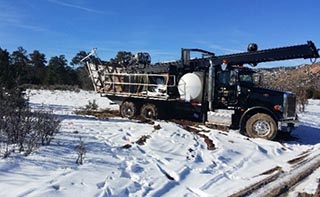
Sundance provided management and execution for two concurrent contracts for a complex multi-year, facility-wide groundwater monitoring program at Fort Wingate Depot Activity (FWDA). The work was conducted under the facility’s RCRA permit, as administered by the New Mexico Environment Department. The monitoring program also supported a RCRA Facility Investigation (RFI) for the southern groundwater regime within Parcel 3 of the FWDA site.
Sundance’s duties included collecting required groundwater samples from more than 70 monitoring wells semiannually, analyzing samples for multiple constituents and constituent groups within two comingled plumes in the bedrock aquifer and six distinct plumes in the alluvial aquifer system as part of multiple interconnected stratigraphic water bearing zones. Sundance’s scope also included measuring groundwater elevations quarterly, preparing semi-annual Periodic Groundwater Monitoring Reports, performing monitoring well/sampling pump maintenance during sampling activities, managing the project chemical database semi-annually, and managing investigative derived waste, such as purge and decontamination water, for off-site transportation and disposal.
The majority of RFI fieldwork was conducted under extreme weather conditions at a remote location near the Continental Divide. Spring winds gust up to 60 mph with sustained winds of 40 mph. Temperatures can swing 50 to 60 degrees each day, ranging from 10 to 100 degrees Fahrenheit. Spring and fall weather conditions result in rain and snowstorms, regularly closing roads and access to wells. Solution: Sundance used alternative field strategies to reduce overall schedule slip because of weather. Schedule adjustments were made in collaboration with USACE representatives to ensure project goals were achieved and other on-site operations were not disturbed.
Sundance is conducting environmental remediation services to provide or ensure clean drinking water is available to PFAS-impacted residences in the vicinity of Fairchild Air Force Base in accordance with technical and regulatory requirements. The team's work includes inspecting, maintaining, repairing, and monitoring residential and municipal Granular Activated Carbon (GAC) treatment systems, including residential piping, appliances, and fixtures; installing GAC treatment systems; sampling private wells; responding to emergency calls related to residential treatment systems; and providing bottled water service.
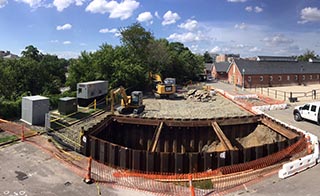
Sundance installed a sheeting/shoring system and performed petroleum-contaminated soil excavation at Building 235 at Joint Base Myer-Henderson Hall. Sundance prepared the Uniform Federal Policy for Quality Assurance Project Plan, Project Management Plan, and Accident Prevention Plan/Site Safety and Health Plan in accordance with DoD and USACE requirements. Work included utility location via ground penetrating radar and potholing, storm water pollution prevention controls and monitoring, site characterization soil boring, and sampling and analysis to define the extent of contamination. Ongoing site activities required hydrocarbon emissions air monitoring, including benzene. Sundance also conducted confirmation sampling to Virginia’s Voluntary Remediation Program Tier III screening concentrations.
Sundance performed a soil contamination investigation adjacent to utilities within nearby roadways and excavated additional areas. Sundance excavated and disposed of more than 2,000 cubic yards of contaminated soil. Critical project activities involved maintaining an open excavation with supported live utilities, which were essential to the base to ensure mission-critical operations. With the site being adjacent to the Old Guard Caisson stables, where daily horse-drawn ceremonies were conducted, Sundance coordinated with the Caisson to ensure there were no mission impacts by performing surgical excavations, which were backfilled with temporary fill to enable garrison horses’ safe passage and prevent impact to daily ceremony schedules. Core drilling water and soil sampling was conducted for total petroleum hydrocarbons–diesel-range organics; benzene, toluene, ethylbenzene, and xylenes; and polycyclic aromatic hydrocarbons for characterization and disposal.
The Sundance Team provided removal of asbestos-containing material (ACM)-impacted soil across an 8-acre site. Work included abatement of ACM contamination in surface soil, capping the area with 12 inches of clean fill, and placing associated soil cover, grading, and site restoration. Additionally, underground storage tank (UST) surface and subsurface sampling were conducted using direct-push technology. Analysis included gasoline organics and diesel range organics, polychlorinated bipheynls, metals, and volatile organic compounds to characterize the UST for abandonment in accordance with the State of Utah Department of Environmental Quality UST Program requirements.
Additional services included project scheduling and planning; preparation of cost and status progress reports; chemical analytical data management and validation; Environmental Resources Program Information Management System data management; meeting support; regulatory and professional interface, including review and interpretation of new statutory and regulatory requirements; development of the Asbestos Removal Action Work Plan/Uniform Federal Policy for Quality Assurance Project Plan; preparation of remedial action completion reports; and providing remedial action-operation.
Natural Resources
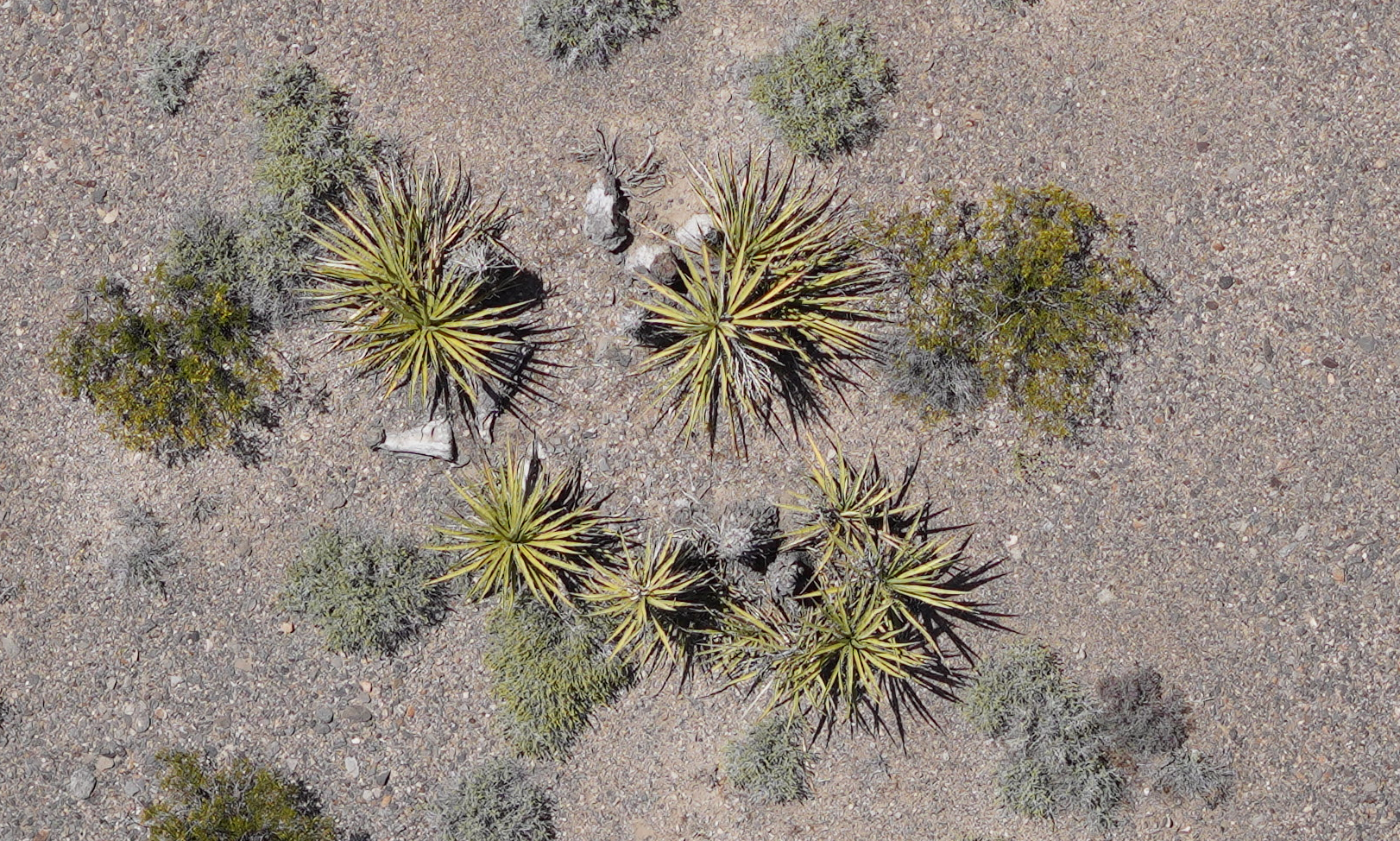
Sundance is supporting development of a designed study to evaluate how concentrated or photovoltaic solar projects affect desert tortoise (Geopherus aggasizii) populations and to assess how solar project construction and operation can coexist with tortoises. Work has involved working with federal land management agencies, educational institutions, individual site evaluations, and performing drone surveys to locate desert tortoise and their suitable habitat.
Sundance is providing direct program support for the following US Department of Energy Programs: 1) Communities Local Energy Action Program (C-LEAP) supporting low-income, energy-burdened communities that are also disadvantaged and/or are experiencing direct economic impacts from a shift away from historical reliance on fossil fuels; 2) Energy Transitions Initiative Partnership Project (ETIPP) Program, which seeks to transform energy systems and increase energy resilience for island and remote communities to increase access to resilient, affordable, sustainable, and clean energy resources; and 3) Clean Energy to Communities (C2C) Community Technical Assistance Program, which connects local governments, electric utilities, community-based groups, and others with experts from across the DOE national laboratory complex and their customized, cutting-edge analysis to accelerate the deployment of clean energy systems that are reflective of local and regional priorities.
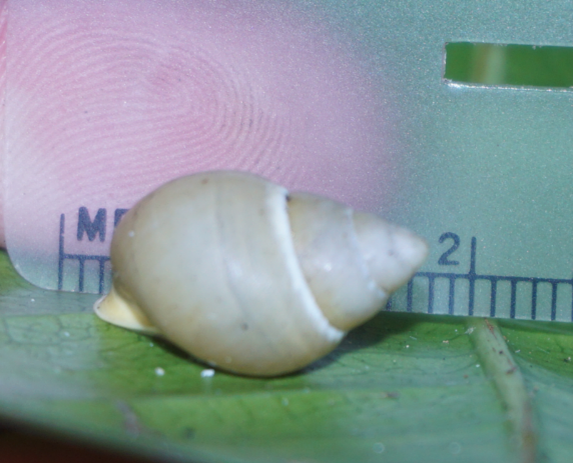
Sundance performed threatened and endangered species survey for the Humped tree snail (Partula gibba) on the Tinian Military Lease Area under a contract with NAVFAC Marianas. The Humped tree snail is a Marianas endemic species that has declined and was listed under the US Endangered Species Act in 2015. The snail populations had not been seen on Tinian since 2013. However, during a 2022 field survey, Sundance recorded populations of the snail. The humped tree snail is endemic to the forest ecosystem on the Mariana Islands. The shell of the humped tree snail can be left- or right-coiling, conic-ovate, translucent, with evenly spaced spiral sculpturing. The color ranges from white to brown, and a pointed apex is colored rose-red, with a milky white suture. The humped tree snail occurs in cool, shaded forest habitat with high humidity and reduced air movement that prevents excessive water loss. The recording of the snails was a monumental occurrence for the US Navy’s conservation program.
Sundance performed a biological investigation to identify rare and/or sensitive plants and invasive species in the Crystal Timber Sale area of the Payette National Forest. Intuitive-controlled surveys were performed to comply with US Fish and Wildlife Service standards and guidelines, as well as to identify any U S Forest Service-listed species, Idaho Fish and Game species of concern, and/or suitable habitat. The purpose of the surveys was to determine potential threats to rare plants or habitat from the Crystal Timber Sale, which is part of the larger Middle Fork Weiser River Landscape Restoration Project. All survey units and temporary access roads were examined in their entirety for the presence of suitable habitat and/or rare plant species, as well as the presence of noxious or other invasive species known to exist on the Payette National Forest.
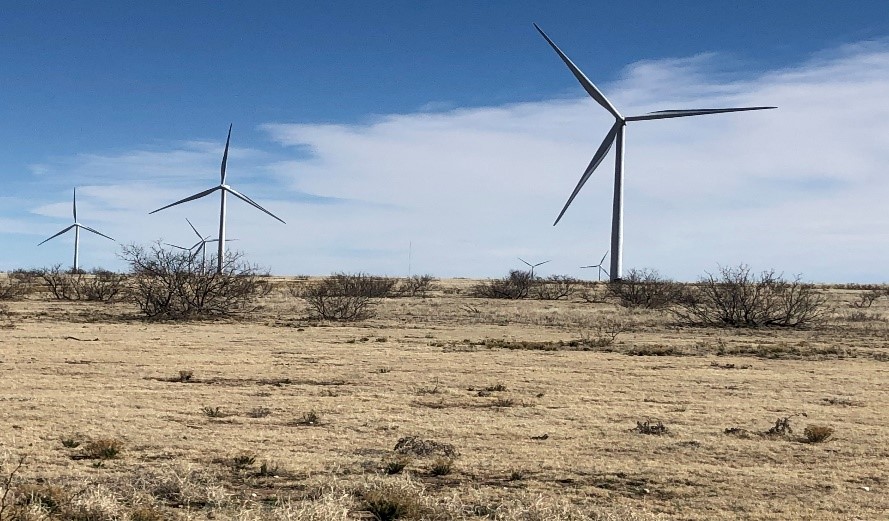
Sundance has conducted a broad range of services across multiple states in support of wind farm construction. Work has included pre-construction surveys, lesser prairie chicken surveys, bird/bat conservation strategy, eagle conservation plans, transmission line retrofitting plan to support an eagle Incidental Take Permit (ITP), and PCM (bird and bat carcass searches) to support project development. Sundance works with the US Fish and Wildlife Service to obtain eagle ITPs and complete supporting environmental assessments for the wind projects. The team conducts PCM (eagle carcass searches) and completes all other permit requirements, including searcher efficiency and carcass persistence trials. Sundance staff have also developed protocol and provide training to on-site staff to conduct monitoring in accordance with permit requirements.
In support of the Bureau of Land Management (BLM), Sundance conducted surveys for Pariette cactus (Sclerocactus brevispinus) and Uinta Basin hookless cactus (Sclerocactus wetlandicus), which are listed as threatened under the Endangered Species Act. The team provided services comprised of collecting field data at eight established monitoring sites, adding additional plots for each of the eight sites, and establishing a new monitoring site for an additional subpopulation during the field season. Sundance performed analysis and reporting of the data back to the BLM Vernal Field Office. Objectives included quantifying population structure, demographic processes, and 10-year population trends for species and subpopulations, as well as quantifying surface disturbance and invasive and noxious weeds.
Sundance completed the inventory mapping of the potential habitat for narrow-leaved monardella (Monardella angustifolia) on Bureau of Land Management lands to map and monitor existing narrow-leaved monardella to assess current population status and evaluate impacts. Sundance botanists performed walking surveys to search for new populations of the plant and collect survey data. Habitat monitoring included collecting bulk soil samples for lab analysis to gain a better understanding of the soil preferences of narrow-leaved monardella.
In 2020, Sundance provided assistance to the Bureau of Reclamation in the logistics, collection, and maintenance of Passive Integrated Transponder (PIT) tag antennas for the movement study in the San Acacia and Isleta reaches of the Middle Rio Grande. The team coordinated all field efforts with the Reclamation and Utah State University (USU) in the planning and deployment, movement, or removal of any PIT tag antennas. Staff were uniquely qualified for this project, permitted to work with all life stages of io Grande Silvery Minnow under US Fish and Wildlife Service permit. On a bi-monthly basis, the team staff visited 20 antennas site locations to download detection data and swap in fully charged batteries into the antennae units. Detection data was summarized with details to facilitate the ongoing movement study by Reclamation and USU and to assist the Reclamation and USU in interpreting detection history data for PIT tagged RGSM. Under a separate contract, Sundance is now providing fisheries expertise for the 2023 egg monitoring program.
Sundance performed a large-scale survey to inventory and map populations of noxious weeds on 15,488 acres of Bureau of Land Management Upper-administered land near Craters of the Moon National Monument for the Upper Snake Field Office. Inventories were completed by conducting field surveys using transects at 50-yard spacing. Survey areas were canvassed using all-terrain vehicles with 100% visual coverage of project boundaries. Crew documented and mapped all noxious weed populations with species, location, and approximate size of infestation.
Sundance updated Cultural, Botanical, and Wildlife Resources Study Reports for the proposed Gordon Butte Pumped Storage Project. The project was first designed in 2014. Since that time, changes had been made in the proposed project facility layouts, including changes to the footprints of the lower and upper reservoirs; the proposed penstock location; spoil area; new equipment parking, layout, and storage areas; and changes in access road alignments. Sundance used a geographic information system to overlay the new proposed project features on the 2014 project features, calculated changes in the resources affected by the updated footprint and consulted relevant databases to complete the desktop analyses.
Sundance prepared a biological resources work plan and performed pre-project surveys for sensitive biological resources, Migratory Bird Treaty Act-protected species surveys, environmental awareness training, and biological monitoring. Sundance’s biological resources survey report proposed mitigation and minimization measures to offset any adverse effects on sensitive and protected species present in the project area.
Since 2022, Sundance has been performing Biological Evaluations (BEs) for various sites across Arizona, New Mexico, and Utah in support of the Navajo Nation Environmental Protection Agency. For a water resources site in McKinley and Apache Counties, Arizona, Sundance performed BE services for proposed water resources improvements, including expansion or renovations of Tribal water wells and storage tanks on two parcels of land. Services included conducting biological surveys and completing a BE, which included an effects analysis of listed species that could potentially occur in the proposed project area. For the Skyline Mine Site in San Juan County, Utah, Sundance conducted field surveys of an abandoned uranium mine site on Navajo Nation land to assess potential impacts to human health and the environment. A BE for the project was completed in 2018; however, the project area was expanded by a total of approximately 295 acres prompting the need for a revised BE. Sundance conducted a desktop analysis of potential species that could occur in the new proposed project area, updating the 2018 BE. Staff then prepared a revised BE, including an expanded effects analysis based on additional listed species with the potential to occur in the project area.
Sundance managed a joint venture team for this project to collect high-value native plants and federally listed trees (Heritiera longipetiolata and Tabernaemontana rotensis) and provide salvage and transplanting services for the threatened orchid species (Tuberolabium guamense) found within the 133-acre footprint of the construction of the P-715 complex at Northwest Field on Andersen Air Force Base. Vegetation communities range from native limestone forest to disturbed shrub and grass habitats. The team conducted a field assessment to determine the health status of the orchids, determine suitable transplant locations, and locate and record the phenology of endangered H. longipetiolata and threatened T. rotensis trees to determine which trees would be used for seed collection. Seeds from H. longipetiolata and T. rotensis, as well as from other high value native plants, were collected and delivered to the Government nursery.
Sundance performed management and execution of preconstruction surveys and environmental monitoring in support of border wall construction. Services
included preparing documents, performing preconstruction surveys, and providing environmental monitoring (biological, cultural, archaeological, and environmental) at three remote sites. Technical support included quantifying anticipated environmental impacts arising from border barrier construction laydown areas, access roads, and related infrastructure construction along the border, developing and assisting with execution of appropriate mitigation measures, and monitoring the construction contractor’s implementation of associated plans. Maintained a rotating crew of biologists and archaeologists to monitor impacts to existing resources and ensure that the construction contractor followed contract Best Management Practices.
Sundance performed ecological and cultural monitoring and data collection for flora and fauna, including special status species, and historical resources known to exist in the area, and preparation of an Ecological and Cultural Resource Monitoring Plan for this US Army Corps of Engineers project site, which is primarily located on ranching and recreation land.
Planning & Permitting
Sundance is developing a 5-year strategic plan for the US Fish and Wildlife Service (USFWS) Pacific Southwest Region Invasive Species Management Program. Working with the USFWS Invasive Species Coordinator, Sundance is helping the USFWS identify the Strategic Plan’s scope and vision, developing and prioritizing objectives, and creating guidelines for working collaboratively and effectively across the region to address the many invasive species needs. The plan is being developed in an adaptive management framework, which sets up annual work plans that can be adjusted to respond to changing conditions and needs based on sound science. Work also includes facilitating strategic planning workshops to obtain feedback from a larger group stakeholder (e.g., a broader sample of USFWS Refuge staff and/partner agencies and nongovernmental organizations through phone interviews automated surveys, and the development of a series of independent exercises for the team to prepare for and follow-up on the off-site workshop and facilitate discussion sessions after each exercise.
In support of Thoreau and Whitehorse Lake Fee-to-Trust Applications, Sundance performed site investigation, records research, and cultural pedestrian survey under guidance from Section 106 of the National Historic Preservation Act and the Navajo Nation Heritage and Historic Preservation Department guidelines, and biological survey coordinated with the Navajo Nation Department of Fish and Wildlife and the US Fish and Wildlife Service. Sundance also consulted with individuals familiar with the project areas and able to provide a historical perspective of the specified properties and surrounding area. All cultural findings and vegetative and wildlife species were documented in resource reports. A Phase I Environmental Site Assessment was completed by a qualified Environmental Professional in accordance with the ASTM Standard Practice E1527-13 guidelines documenting the determination of any known or possible Recognized Environmental Concerns or other environmental or cultural issue of concern identified in the site reconnaissance, as well as identifying and evaluating any associated environmental liabilities. Sundance also completed an Environmental Assessment for each of three parcels of land within the project site in accordance with Council on Environmental Quality 1500-1508 and the Bureau of Indian Affairs National Environmental Policy Act Guidebook.
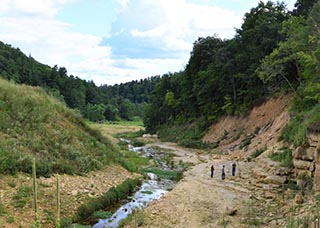
In support of the Natural Resources Conservation Service, Sundance is managing the preparation of a watershed study and a Project Plan-Environmental Impact Statement (PLAN-EIS) for two watersheds in southwest Wisconsin, of 68,762 and 63,761 acres, respectively. The planning effort will result in two separate project plans and EISs to evaluate the environmental, economic, and social impacts or consequences of the proposed plan.
The project area has numerous flood control dams that were built in the 1960s and are now aging infrastructure needing repair, replacement, relocation, or removal. An intense storm event in August 2018 brought about failures on five dams in the watersheds. The team’s study will help determine the best course of action for the future of the five dams, as well as other similar dams in the local counties. Project work includes developing watershed and hydraulic models to evaluate hydraulic scenarios in the watershed and impacts upon land and infrastructure during storm and flood events. These data will be applied to the benefit-cost analysis for each scenario within the watershed. Services also include leading public meetings to inform and gather public feedback, developing and hosting a project progress and document viewing website, and coordinating with the USACE and Wisconsin Department of Natural Resources for multiple sensitive plants and animal species.
Sundance holds a consecutive 5-year contract with Intermountain Region to provide "National Environmental Policy Act (NEPA) analyses, studies, and related work associated with forest and project planning. Under its prior 5-year contract, Sundance was awarded 10 task orders, including for completion of NEPA documents in compliance with public process provisions required through NEPA (40 Code of Federal Regulations [CFR] 1500-1508), Council on Environmental Quality guidelines, US Department of Agriculture regulations at 36 CFR Part 219 and 220, and all other applicable laws and regulations, including US Forest Service Manuals 1909.15 and 1950. Sundance is responsible for and prepares the analysis for all tasks awarded, including the collection of field data, preparation of specialist reports, Biological Assessments, Biological Evaluations, Categorical Exclusions, Findings of No Significant Impact, Decision Notices, and the management and completion of the public participation process. Sundance has conducted interagency coordination and consultation with Tribes, State Historical Preservation Offices, and other federal agencies, including US Fish and Wildlife Service, Bureau of Land Management, and state environmental agencies.
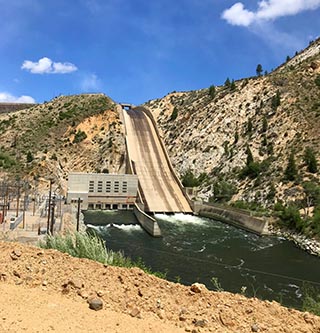
Sundance led a joint venture team in developing an integrated Feasibility Report and Environmental Impact Statement (EIS) for a proposed six-foot dam raise of Anderson Ranch Reservoir, as well as a three-foot raise alternative. To meet funding obligations under the Water Infrastructure Improvements for the Nation Act of 2016, the Feasibility Report and EIS were done concurrently and completed in late 2020. The EIS, the first within the Bureau of Reclamation to be completed in compliance with Executive Order 13807, uses the One Federal Decision method, with US Forest Service and US Army Corps of Engineers as official Cooperating Agencies. Twenty-three environmental specialist reports support the analysis in the EIS.
The EIS was a high-profile project due to the high demand for water use within the surrounding metropolitan area of Boise, Idaho; the inherent value of recreational opportunities at Anderson Ranch Reservoir; and the presence of bull trout (endangered species) and extensive trout fisheries in the South Fork of the Boise between Anderson Dam and nearby Arrowrock Reservoir. The project also included the completion of a Biological Assessment in support of Endangered Species Act requirements and a Biological Opinion issuance by the US Fish and Wildlife Service.
Feasibility analysis included feasibility level design and cost estimates of the non-structural alternative, non-contract cost estimates related to the proposed structural and non-structural alternatives, economic benefit analysis, cost- allocation analysis, and final Feasibility Report. The various analyses are incorporated into technical memoranda and support the final Feasibility Report. All documents follow agency compliance and processes.
The purpose of the ESA consultation was to receive an Incidental Take Statement for the effects of the dam raise and operation and maintenance activities on bull trout. Sundance coordinated a successful early interactive review of the draft Biological Assessment with the US Fish and Wildlife Service to resolve potential issues that could delay the project. The Biological Assessment was reviewed by the US Fish and Wildlife Service, processed through the Biological Opinion process, and received the Incidental Take Statement.
Working with the Bureau of Land Management Salmon Field Office, Sundance performed biological investigation within the Ramsey Mountain site to identify rare and sensitive species and critical habitat. Sundance prepared a Biological Assessment to meet US Fish and Wildlife Service standards and an Environmental Assessment to analyze the potential environmental impacts of the communications right-of-way in accordance with US Code 4371 et seq NEPA of 1969, 40 CFR 1500-1508, 32 CFR 989, and the Bureau of Land Management NEPA Handbook.
Sundance provided technical support to complete a USAF Environmental Impact Analysis Process to determine the environmental impact of the proposed construction of the expansion of Taxiway Alpha (A) and Bravo (B). The base proposes to expand Taxiway A and B and the associated shoulders to accommodate current aircraft usage and efficient base air operations. The team completed an EA and the appropriate decision documents under the National Environmental Policy Act and US Air Force policy. The Environmental Assessment is also California Environmental Quality Act compliant. Project tasks included the development of a project work plan and schedule with document preparation and review, and teleconference and meeting support. Natural and cultural resources site work and report development were part of the process. Sundance’s Principal Investigator completed a cultural site survey of the proposed runway expansion project area. The proposed project area also has species of flora and fauna that are considered candidates as threatened and endangered species.
The Bureau of Indian Affairs Navajo Region contracted with Sundance to develop an Environmental Assessment in conjunction with a Range Management Plan near Tuba City, Arizona. The objective is to provide documentation that assesses the impacts of the proposed plan on Land Management District 3 throughout 1.4 million acres. The documentation assesses environmental impacts on the physical environment, including natural resources, cultural resources, geological resources, water resources, etc. The preferred action includes proposed adjustments to grazing, conservation goals, riparian protection, and a rest rotation system. As a culturally sensitive project, Sundance used a certified Navajo interpreter to facilitate cultural understanding and communication with the Navajo people. Sundance is now performing National Environmental Policy Act analysis, including internal scoping with the Bureau of Indian Affairs and the Navajo Nation; preparation of public meeting materials (including involvement with USFWS and the Navajo Nation THPO; facilitation of public and agency meetings; literature review of natural resources data; development of alternatives; preparation of specialist reports; and preparation of the draft and final Environmental Assessment; as well as assisting the Bureau of Indian Affairs and the Navajo Nation Historic Preservation District with the preparation of a National Historic Preservation Act Preliminary Assessment, Section 106 consultation letters, and cultural resource identification. Sundance also assessed impacts of the Range Management Plan on human and natural resources, such as vegetation, soils, wildlife, cultural resources, wetlands, and water resources.
Sundance, in coordination with the Taos Pueblo Division of Natural Resources, is developing an Agriculture Resource Management Plan (ARMP), which will be used by the Pueblo to manage agriculture and range lands to increase production and assist tribal landowners in improving agriculture production. The project area is within the exterior and interior boundaries of the Taos Pueblo lands in Taos and Colfax counties; elevation ranges from 7,200 feet to more than 13,000 feet. Accessibility ranges from good to difficult in wilderness areas and those of rough or rugged terrain. Prior to the project startup, it was determined that due to COVID-19, meeting with Pueblo representatives, Indian landowners, and agricultural producers to facilitate community meetings would not be feasible. The project kick-off meeting was limited to one day with all COVID-19 measures in place. Alternate means of public information gathering and dissemination, such as questionnaires and surveys, are being used to identify resource concerns and communicate with the stakeholders and landowners to determine common solutions to agriculture production issues and concerns. This public information will help the Pueblo identify tribal agricultural goals and objectives and to define critical values of Taos Pueblo tribal members for holistic management structures and assist in the development of a usable ARMP document. Sundance also developed a Strategic Management Plan to guide completion of all phases of the ARMP, which is being developed using the guiding principles of the American Indian Agricultural Resources Management Act in accordance with Title 25 USC Chapter 39, as applicable.
Sundance prepared environmental documentation for the categorical exclusion of the harvest of 715 acres of timber in a wildland-urban interface for Blackrock Ranger District. In coordination with US Forest Service personnel, Sundance facilitated public involvement, performed field work to support analysis of environmental effects, maintained the project record, and prepared National Environmental Protection Act documentation and the Decision Memo for use in consultation for Section 106 of the National Historic Preservation Act and Section 7 of the Endangered Species Act.
Sundance also performed a cultural resources inventory of 161 acres of forest. The survey included an intensive pedestrian survey conducted using parallel transect intervals spaced no more than 30 meters apart. One previously recorded site was revisited, and one newly recorded site was identified as a result of the survey. No avoidance or mitigation measures were recommended.
Sundance completed six Phase I Environmental Site Investigations on former allotments within the Fort Hall Reservation. The investigations were a part of environmental due diligence in preparation of transfer of property ownership from fee to trust. Fieldwork was completed to identify if any recognized environmental conditions existed in connection with the allotments and required coordination of a Trespass Permit with the Shoshone-Bannock Tribes Land Use Policy Commission to access allotments.
Sundance prepared a NEPA- and CEQA-compliant EA and supporting documentation for a potential habitat restoration project for the listed tri-colored blackbird (Agelaius tricolor). The EA analyzed impacts from the creation and/or enhancement of nesting and foraging habitat for the blackbird, while avoiding conflicts with base operations. Sundance’s proposed alternative included two design options to enhance, restore, and/or create a habitat.
Cultural Resources
Sundance performed a cultural resource records search, pedestrian survey, ethnographic research, and survey, for the Mesa I 1/2 and Mesa V Abandoned Mine Lands (AML) abandoned uranium mine located in the Lukachukai Range, Arizona. The proposed remediation involving GIS mapping, gammas scanning, X-ray fluorescence scanning, and soil sampling on the Navajo Nation would result in non-invasive and invasive ground disturbance on Navajo Nation lands and could impact cultural resources. Multiple sites were located and evaluated for potential adverse impacts as a result of the proposed remediation in compliance with Section 106 of the National Historic Preservation Act. The project area is characterized by vertical mesa walls, intermittent creeks, and intra-mesa caverns. Many of the roads are subject to being washed away, and accessibility difficulties were anticipated and overcome. The investigation and survey support and document avoidance of found cultural resources. The investigation included a record search through the Navajo Nation Heritage and Historic Preservation Department, ethnographic survey of Tribal Elders familiar with past knowledge of the mine site, and application of Native American and pre-contact use of the region. The final deliverables included an extensive cultural TCP review and cultural context tailored to the Lukachukai Mesa Range.
Sundance performed a cultural resource inventory to identify and assess potential impacts to historic properties associated with mining exploration. The proposed action is located on Forest Service land and would result in ground disturbance that could impact cultural resources, as such evaluation of the proposed impacts in compliance with Section 106 of NHPA was required. The project area comprises steep mountain slopes and deep drainages, and an elevation around 8,850 feet. The investigation included locating a single temporary drill pad set up at four locations associated with this mining exploration project. The investigation included a record search through the Archaeological Survey of Idaho, review of Idaho Geological Survey data on mines and prospects, and a general understanding of Native American and pre-contact use of the region. Two historic mining sites were recorded as a result of the survey.
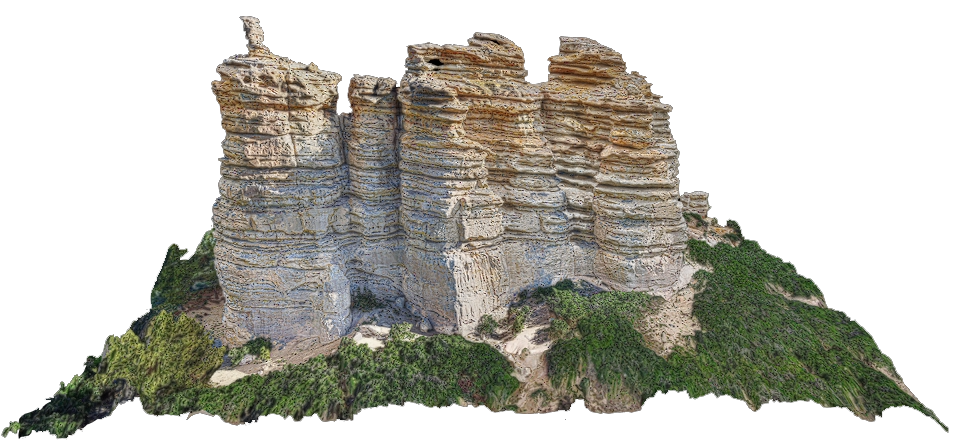
Cathedral Rock is a massive 100-foot-tall sandstone pillar on the grounds of the US Air Force Academy (USAFA) with significance to the federally recognized Tribes affiliated with USAFA. Cathedral Rock required formal evaluation for its eligibility for listing on the National Register of Historic Place (NRHP) as a Traditional Cultural Property, including its 21 sites and three landscape features. Sundance’s scope includes performing cultural resources inventory, recordation, and evaluation support to USAFA. Work includes conducting a literature/archival search, including a review of all past USAFA compliance documents, Tribal correspondence and assessments, and any assessments of Cathedral Rock; recording/evaluating Cathedral Rock as a Traditional Cultural Property from a Tribal and/or Euro American perspective, and preparing a NRHP and Colorado State Register nomination package; and performing a Class III intensive cultural resources survey within the Cathedral Rock site boundary to identify, record, and evaluate any newly discovered archaeological components related to Cathedral Rock and their significance to the Cathedral Rock Traditional Cultural Property. Sundance’s tasks also include an updated management plan comparing the cumulative changes that have occurred since 2009 baseline observations were made, including new photographs from 102 digital image data points to document changes to the site over the last 10 years. Sundance employed LiDAR and Photogrammetry/DStretch 3D modeling to identify prehistoric, historic, and modern scratched, pecked, and painted images on Cathedral Rock.
Sundance performed a cultural resource inventory of 463 acres to identify and assess potential impacts to historic properties associated with proposed forest treatments. Sundance also conducted environmental analyses, prepared National Environmental Policy Act specialist reports, including Biological Assessment and Biological Evaluation, and drafted an Environmental Assessment and Finding of No Significant Impact. The maximum total treated acreage would be 665 acres within an 827-acre project area. Sundance was able to complete cultural and invasive species inventory simultaneously. This allowed the field crew the flexibility to complete multiple tasks thoroughly and efficiently, while reducing field and mobilization costs. The project’s remote location in northern Utah at a high elevation (around 10,000 feet above mean sea level) presented a challenge. Tailgate safety meetings were conducted, as well as end of day check-in, due to the remote area and lack of cell phone reception. Completion of this project required ongoing interagency coordination and consultation with the Ute Tribe, Utah State Historical Preservation Office, and the US Fish and Wildlife Service. A total of 24 site records or addenda were prepared, including for 13 prehistoric sites, 1 ethnographic site, and 10 historic sites.
Sundance performed Class III cultural resources inventory of 2,059 acres and Phase II evaluations of eight sites within the Saylor Creek Range area of the Great Basin Region. Saylor Creek Range is a fenced Exclusive Use Area, 12,840 acres in size, and where the vast majority of the prehistoric resources and most of the historical-period resources are located. Prehistoric sites consist primarily of open-air lithic and artifact scatters with dates spanning the entire cultural sequence, including a large number of Paleoindian sites. Prehistoric features were identified at a small number of sites. Historical-period sites included sheep- and cattle-ranching camps, water-control facilities, irrigation structures, transportation facilities, and military sites dating to the World War II and Cold War eras.
Sundance prepared specific research design, including conducting an intensive archaeological inventory, preparing site record updates for 23 previously recorded archaeological sites, and isolating records for any newly identified resources. Sundance also conducted subsurface impact assessments to determine the extent of disturbance during fire containment ground disturbing activities. The final deliverables included a draft and final report describing the results of archival research, field methodology, and the results of fieldwork and laboratory analyses, such as focused prehistoric and historic contexts and management recommendations. In addition, Sundance conducted shovel exploratory units, developed a historic context in support of NRHP-evaluation of a military crash site (Site 10-OE-7966), and managed GIS data, and health and safety. Key project aspects included coordination with the US Air Force Customer Relationship Management, US Air Force Materiel Command, Air Force Civil Engineer Center, security and explosive ordnance disposal range management, and following range and Air Force policy.
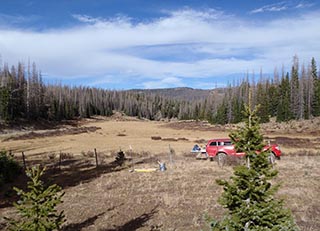
Sundance performed a cultural resources inventory of 350 acres for the proposed Del Norte Peak Timber Salvage. Inventory results for the proposed action suggest that the area exhibits a low potential for prehistoric and historic sites due to the rugged terrain and high altitude. The survey was conducted using parallel transect intervals spaced no more than 20 meters apart; transects were maintained using a global positioning system device. Surface visibility was generally good (50% to 75%) within the project area due to the type of vegetation present. The ground surface was at times obscured with pine duff and leaf litter. Three previously recorded sites were relocated and fully recorded. Shovel tests were also excavated in order to determine subsurface potential. Sundance evaluated the cultural properties for their NRHP eligibility, and prepared NRHP eligibility recommendations specifying National Register criteria and site integrity.
The Bureau of Reclamation and Bonneville Power Administration have been working collaboratively toward the implementation of salmonid habitat improvement projects in the upper Salmon River Basin, which includes the Pahsimeroi River sub-basin, to help meet commitments contained within the 2014 Supplemental Federal Columbia River Power System (FCRPS) Biological Opinion (BiOp); [National Oceanic and Atmospheric Administration Fisheries 2014]). The BiOp includes a Reasonable and Prudent Alternative, or suite of actions, to protect federally listed salmon and steelhead fish throughout their life cycles. Habitat improvement projects in various Columbia River tributaries are one aspect of this Reasonable and Prudent Alternative. Reclamation provides technical assistance to states, Tribes, federal agencies, and other local partners for identification, design, and construction of stream habitat improvement projects that primarily address stream flow, access, entrainment, and channel complexity limiting factors. Reclamation’s contributions to habitat improvement are all meant to be within the framework of the FCRPS Reasonable and Prudent Alternative or related commitments.
Since 2015, Sundance has provided intensive cultural resource inventory surveys to the Reclamation supporting this program through various partnerships with local agencies and the Bonneville Power Administration. Staff have conducted 27 cultural resource projects in support of stream restoration, habitat restoration, and fish passage projects. Sundance provides intensive and reconnaissance cultural resource surveys to fulfill Section 106 of the National Historic Preservation Act; background investigations and literature reviews; visits previously recorded sites; makes recommendations for eligibility on the National Register; and coordinates and consults with the Idaho State Historic Preservation Office.
Sundance completed a cultural resources inventory of 4,246 acres in the Blanding Basin subdivision of the Colorado Plateau Province. The team performed an intensive pedestrian survey to locate and record cultural resources and to provide information regarding impacts to cultural resources due to hazardous fuel treatments. The area is characterized by broad ridges separated by deep rugged canyons, formed by the down cutting of major drainages through soft sandstones, shales, and colluviums of the region. Prominent landforms in the area include the Abajo Mountains to the northwest, Comb Ridge and Cedar Mesa to the southwest, Montezuma Canyon to the east, and Alkali Ridge to the south.
Sundance performed all fieldwork over four limited field seasons, which required work in harsh climates and, at times, stopping work due to snow cover exceeding 30 percent and making field survey impossible. Pedestrian survey transects were spaced at no more than 15-meter intervals. Archaeological sites were recorded using IMACS forms and documented with digital photographs of site features and general overviews. Diagnostic artifacts (e.g., jacal) were photographed and sketched. All previously recorded sites were re-recorded on updated IMACS forms. A permanent site datum was placed at each site. The investigation was limited to surface evaluations; no subsurface testing was conducted. Isolate occurrences were assigned individual numbers, and diagnostic isolate occurrences were sketched and photographed.
Crew members hiked long distances and, at times, during severely cold and wet weather. Access to the project area also required driving considerable distances in high-clearance, 4-wheel drive vehicles. To ensure safe fieldwork while working in harsh conditions, Sundance followed a site-specific Health and Safety Plan (HASP) in accordance with OSHA standards and regulations. This area had a very high concentration of cultural sites and artifacts. Sundance recorded 984 total project resources, including 406 sites (96 previously recorded prehistoric sites and 310 newly recorded) and 578 isolated occurrences; 304 sites were recommended as eligible for listing on the NRHP. The sites varied from very common in the region to medium density debitage and sherd scatter to a moderate density of artifacts, presence of diagnostic artifacts, features, and probability of prehistory and information pertaining to regional prehistoric land-use patterns and resource procurement and processing technologies. Ancestral human remains were found during this project and NAGPRA identification and reporting protocols were followed.
Sundance performed a cultural survey and report to satisfy state and federal historic preservation legislation, including Section 106 of the NHPA. The juniper woodlands restoration project included thinning using a variety of treatment methods (prescribed fire, hand treatment with chainsaws, and masticators) to reduce wildland fuels and juniper densities resulting in less intense wildland fires and improving habitat quality for sagebrush steppe obligates. Sundance conducted a cultural resources inventory of the 5,130-acre project area via an intensive pedestrian survey. The team documented information, mapped sketches, plotted using topographic maps and a GPS, documented with photographs, drew artifacts, and determined eligibility for inclusion of sites on the NRHP. Location data was supported by GIS data based on differentially corrected GPS points. Sundance completed the documentation for cultural resources located within the project area and prepared a final report that presented the results of the inventory, as well as NRHP site eligibility evaluations. Relevant
regulations to the project included Section 106 of NHPA. From the intensive archaeological inventory, a total of 209 sites were identified (130 newly recorded and 79 previously recorded) and isolate forms were completed for 13 isolated tools. After final analysis, 69 sites were recommended as eligible for listing on the NRHP.
Sundance conducted targeted archaeological inventory of 2,500 acres of Idaho BLM public lands in support of livestock trailing and grazing permits. The
inventories were focused on livestock congregation areas, such as troughs, reservoirs, springs, water courses, staging areas, bedding areas, and other
congregation locales. The inventory results provided information on the distribution and character of archaeological sites within the project areas, assess
the eligibility of archaeological sites for listing on the NRHP, and determined the effects of grazing and trailing on historic properties. The results of the
inventories were used to meet BLM’s obligations under the NHPA, the state protocol, the Federal Land Policy and Management Act of 1976, and NEPA.
Sundance assessed and documented damages from an ARPA violation of unauthorzed excavation within site CB-630/10-OA409, which is a multi-component site consisting of historic and prehistoric artifacts. The historic component included a residential foundation, historic canals, historic fence lines, and associated glass and metal artifacts. The prehistoric component consisted of a seasonal camp or processing camp containing surface and subsurface deposits of cultural material. The contents of the trench were characterized by archaeological testing that consisted of excavating four 1-meter by 2-meter test units and four 1-meter by 1-meter test units along the disturbed trench alignment. An additional 1-meter by 2-meter test unit was excavated in an artifact concentration located in the southeast portion of the site.
Public Involvement & Tribal Liaison Services
Since 2005, Sundance has performed more than $3.5M in program management services under successive Native American Lands Environmental Mitigation Program (NALEMP) contracts for the USACE Albuquerque District. The USACE is the executing agency responsible to the Office of the Assistant Secretary of Defense for Sustainment (OASD[S]) to carry out the NALEMP through cooperative agreements (CAs) with multiple Tribal Governments in New Mexico. Sundance has proven to have a full understanding of the NALEMP process and execution requirements, having provided program management and oversight on all active NALEMP CAs in support of addressing DoD-related environmental impacts on Native American Lands. Services include providing technical, field-level, and logistical support to the USACE within the NALEMP, including facilitation of Government-to-Government coordination for consultations in development of required Memorandum of Agreements with the Pueblos of Acoma, Isleta, Laguna, San Felipe, Santa Ana, Santo Domingo, and Zuni.
Sundance performs records research associated with impact site(s) and conducts in-depth interviews with Tribes and the USACE related to these site(s). The team provides technical recommendations for the execution of CAs based on the interviews and records research to determine task priorities and deliverables. On behalf of the Pueblo Tribes, Sundance has successfully executed more than 40 CAs with the USACE Albuquerque District, the USACE Headquarters, and OASD(S).
Sundance continues to build and maintain strong relationships with the Pueblo Tribes by organizing and facilitating NALEMP individual quarterly Tribal and USACE meetings where goals, objectives, tasks, schedules, issues, and concerns are discussed in an open forum. Once a year, Sundance organizes and facilitates a joint NALEMP Tribal and USACE meeting, where all active CA Pueblo Tribes and the USACE come together to discuss lessons learned on past and present CAs, such as how to better understand working with Pueblo Tribes, the USACE Albuquerque District, subcontractors, the USACE Headquarters, and the OASD(S). These meetings are instrumental in sharing information on best practices and in moving the CA process forward in a timely and positive manner.
Sundance analyzes and monitors the Pueblo Tribes technical performance, deliverables, and conducts quarterly QC checks to ensure proper reporting and spending of Government funds. The team provides technical reviews, analysis, report and plan development, recommendations, Request for Proposal development, and guidance to the Pueblos related to DoD impacts. We also work with the Pueblos in a mentoring capacity, as mentoring is essential to ensure the Pueblos become self-sufficient in managing their CAs and gain trust with the USACE to continue long-term relationships.
Sundance also conducts environmental database and cultural communication trainings with each new CA Tribe and USACE staff member entering the NALEMP with the USACE Albuquerque District.
Since 2005, Sundance has served as primary subcontractor delivering more than $4.8M in program management services under successive contracts for the Native American Lands Environmental Mitigation Program (NALEMP) in support of prime contractor Keres Consulting and end-client OASD(S). As Tribal Liaison on the NALEMP, Sundance provides technical expertise between the DoD and numerous Native American Tribes, Alaska Villages, and Alaska Native Claims Settlement Act (ANCSA) Corporations. Services include managing, coordinating, directing, planning, and implementing preliminary and on-site assessments to document DoD impacts to Tribes and Tribal lands. This includes a focus on potential effects on Tribal communities’ way of life to determine priority for cleanup action based on health, safety, and environmental criteria. Sundance also conducts cultural and archaeological reviews in coordination with the SHPO and Tribal Historic Preservation Office to determine any culturally or archaeologically significant artifacts or areas that may be impacted by potential contamination, ordnance, or debris on a site.
Sundance has conducted more than 160 NALEMP site assessments, where we have established relationships with Native American Tribes. Communications comprise interviews, email, and traditional mail correspondence focused on identifying and documenting Tribal shareholder concerns regarding potential hazards on Tribal lands. Interviews include discussion of the impacts of hazards to Tribal shareholder use of or access to subsistence items; preparation and use of food or medicines; use of or access to cultural, ceremonial, religious, or sacred sites; development opportunities; and access to commercially used natural resources.
Sundance provides ongoing support for public/community meetings and facilitation of Tribal relations between the Tribal Governments and the US Government to ensure there are open lines of communication between all parties. Newsletters, fact sheets, and background documentation are developed and distributed to educate the public and Tribal membership regarding site contaminants and risks. Questions are addressed in an open forum. For example, entrance and exit briefings are conducted with the Tribal Government to ensure an understanding of the NALEMP process and site assessment activities. Sundance also conducts extensive interviews with the Tribal Governments and the residents to document public perception about environmental impacts and how these impacts affect subsistence use, native economics, lifestyles, religion, and cultural practices.
Sundance provides extensive coordination with regulatory agencies to both ensure unified consensus and buy-in from
all parties and to secure approval to access project sites. During the 2021 field season, Sundance conducted three site assessments for nine impact areas on Native American and Alaskan Native land to determine NALEMP eligibility for future remediation funding. Sundance worked directly with the federally recognized Tribal entities, Consortiums, State of Alaska, Bureau of Indian Affairs, Bureau of Land Management, and the ANCSA Regional and Village Corporations to obtain access permits and National Historic Preservation Act Section 106 concurrence. During the 2018 field season, Sundance negotiated land access permit waivers from the North Slope Borough, who oversees land management regulations on the North Slope. Sundance coordinated with the Native Village of Nuiqsut to request a permit fee waiver on its behalf from the North Slope Borough, as cleanup on the land would ultimately benefit the Tribe. By facilitating the permit process, on behalf of the Tribe, Sundance saved roughly $3,000 in permit fees.
As part of the National Renewable Energy Lab (NREL) Communities Local Energy Action Program (LEAP), Sundance supported NREL and a coalition of community partners in Questa, New Mexico with the evaluation of the use of clean hydrogen as an alternative energy. The project aims to utilize retired mine land and water resources for beneficial use and be part of the solution to meet peak requirements, achieving jobs creation, statewide clean energy laws, and New Mexico greenhouse gas emissions reductions. Sundance conducted public outreach to solicit community input to help inform NREL’s feasibility analysis of building a green hydrogen energy facility in the community. Work included preparing pre-meeting survey of interested parties; consulting with NREL to establish the meeting agenda; meeting facilitation for hybrid (in-person and virtual) public meetings in Questa and Taos, New Mexico; coordinating with the community coalition (Village of Questa, Kit Carson Electric Cooperative, Chevron Corporation, and Questa Economic Development Fund); responding to questions from meeting attendees; and managing and resolving any conflicts arising during the meeting; and preparing the Public Meetings Summary Report documenting the outreach process and summarizing the general outcome of the meetings for the Green Hydrogen Project.
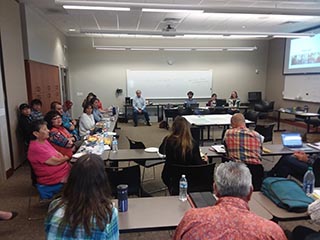
Sundance successfully completed its 2017 to 2020 contract and is now performing follow-on services to provide Tribal engagement process design, facilitation, and implementation support services to the Manti-La Sal, who is revising their Strategic Land Management Forest Plan, which includes the high visibility and challenges associated with the Bears Ears National Monument. The Forest Plan revision requires extensive collaboration with the Pueblos of Acoma, Laguna, San Felipe, Tesuque, Zia, Zuni, Santa Clara, and the Hopi; Ute Mountain Ute, Ute Indian, and San Juan Tribes; and the Navajo Nation. Throughout the various stages of Forest Plan revision, Sundance has assisted with in-person and virtual meetings and workshop planning for the overall strategy with an emphasis on Tribal engagement and collaboration. Contract efforts are led by Sundance Owner September Myres, whose experience as a Tribal Liaison over the past 30 years is integral to the success of this project.
Sundance is leveraging its Tribal collaboration services along with leadership and problem-solving skills to assist the Manti-La Sal in developing and gaining support for the revised Forest Plan from these Tribes, as well as the public and other federal, state, and local agencies. As a third-party expert and trusted resource of many Tribes, Sundance engages affected Tribes and initiates dialogue while providing the US Forest Service with unbiased recommendations for the Forest Plan revision. This approach best positions Sundance for a culturally sensitive solution at best value to the Government.
Sundance's unique knowledge of each of the Tribes, coupled with a strong relationship with the Forest Service, aided in the development of an implementable engagement strategy that integrates Native culture in compliance with the Forest Service Planning Rule. The Planning Rule framework follows the National Forest Management Act of 1976, which requires every national forest or grassland managed by the US Forest Service to develop and maintain an effective Land Management Plan.
Sundance performed two tasks for this project. The first task was an assessment of stakeholder attitudes towards recovery efforts for the Lahontan Cutthroat Trout. An assessment was conducted that included interviews of stakeholders in Burns, Oregon and Elko and Reno, Nevada, and an assessment summary report was prepared with a stakeholder engagement plan that was presented at a final meeting. The second task was to prepare a Public Participation Strategy in accordance with the 2012 planning rule for the Humboldt-Toiyabe National Forest's upcoming forest plan revision, which required coordination with the US Forest Service and Udall Group personnel.
The Public Participation Strategy provided a roadmap for how the Forest Interdisciplinary Team would inform, engage, and collaborate with the public during each phase of the planning process. The Public Participation Strategy also provided a foundation to implement the 2012 Planning Rule—final directives for National Forest System land management planning—describing broad commitment to engaging the public throughout the planning process and adhering to the National Environmental Protection Act guidelines.
Sundance conducted three in-person meetings with Humboldt-Toiyabe National Forest employees and presented the Public Participation Strategy at the final meeting. Although the period of performance for this contract was less than five months, all deliverables were completed on schedule and were accepted by the clients with minimal comments. The Forest Service and the Udall Group stated that the quality of the deliverables on this contract were very high.
Since 2016, Sundance has provided management and execution of environmental restoration efforts at the Bulk Fuels Facility release site at Kirtland Air Force Base. The site is managed under the requirements of the RCRA as administered by the New Mexico Environment Department (NMED). Under its 2016 to 2020 contract, Sundance developed and submitted to NMED an RCRA Facility Investigation (RFI) report and risk assessment for the release site and provided community relations services to support coordination with the affected population.
In 2014, previous project contractors encountered challenges developing the RFI report within New Mexico’s unique regulatory environment and the report was ultimately rejected by NMED and withdrawn by the US Air Force due to lack of stakeholder support. To overcome this challenge, Sundance worked with the USACE and the Air Force Civil Engineer Command (AFCEC) to develop a new approach for submittal of the RFI document that would be effective within the New Mexico regulatory environment. Sundance worked collaboratively with USACE, AFCEC, and NMED to develop an RFI report that was technically defensible and acceptable to all stakeholders. This RFI report was approved by NMED in September of 2020.
Work at the release site required approval and coordination with primary stakeholders to include the USACE, AFCEC, Kirtland Air Force Base support services, and the NMED RCRA Hazardous Waste Bureau. Additional stakeholder coordination included the City of Albuquerque, Bernalillo County, the Bernalillo County Water Utility Authority, the local Veteran’s Administration hospital, the US Environmental Protection Agency, and state and local elected representatives. In addition, this site affects the Middle Rio Grande aquifer, a significant water resource for the city of Albuquerque. Challenges were presented in the form of extensive stakeholder, political, and public involvement, and many diverging opinions. Sundance provided careful facilitation of challenging technical working group and stakeholder meetings, supporting USACE and its USAF customer throughout difficult decision making to arrive at productive discussions. The team’s established trusting relationships with clients and stakeholders gained consensus leading to more efficient execution of project tasks and exceeding the Government’s expectations.
